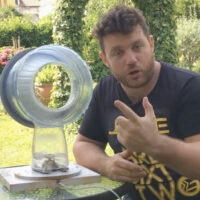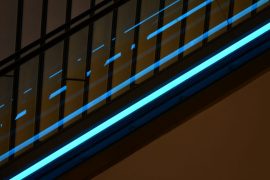The last time we checked in with Swedish designer, craftsman, and innovator Love Hultén, he was blending mid-century style and American walnut to create a series of drool-worthy retro gaming devices powered by a Raspberry Pi.
More recently, the master of fusing traditional artisan knowledge with modern technology turned his attention from video games to fractals and self-similar patterns with the Echo Observatory visual synthesizer.
As a “mysterious artifact” that generates and visualizes complex mathematical formations in real-time, the Echo Observatory presents fractals as visual patterns – rather than digits – which can be manipulated by the viewer using a variety of controls each representing a unique algebraic parameter. When manipulating the data values, the visual pattern mutates and transform into endless fractal formations.

Using his trusty American walnut to build the cabinet, Hultén built a cabinet around the custom-built visualizer with a genuine pearl inlay and hand machined brass turn knobs for controls while the use of a circular display eliminates set directions and lets users gaze deep into what Hultén describes as “mind-blowing unintelligible wonders.”

From the Fractal Foundation:
“A fractal is a never-ending pattern. Fractals are infinitely complex patterns that are self-similar across different scales. They are created by repeating a simple process over and over in an ongoing feedback loop. Driven by recursion, fractals are images of dynamic systems – the pictures of Chaos. Geometrically, they exist in between our familiar dimensions. Fractal patterns are extremely familiar, since nature is full of fractals. For instance: trees, rivers, coastlines, mountains, clouds, seashells, hurricanes, etc. Abstract fractals – such as the Mandelbrot Set – can be generated by a computer calculating a simple equation over and over.”





Yeah, we kinda want one.






